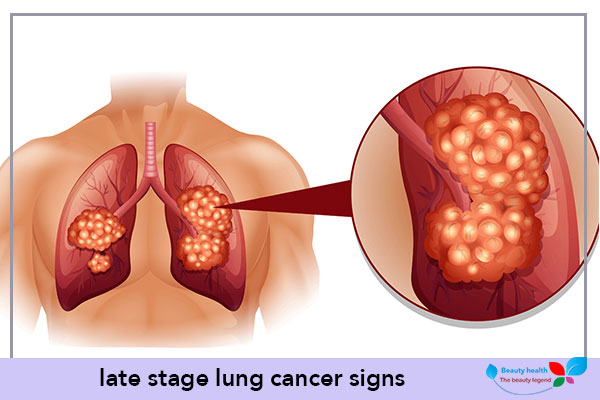late stage lung cancer signs
late stage lung cancer signs
late stage lung cancer signs | What are the stages of lung cancer , how long does lung cancer spread , how is lung cancer the fourth stage, what is the treatment for lung cancer, and are there cases of lung cancer cured?
Diagnosing these symptoms in the patient means that he has reached a dead end and there is no effective treatment that can contribute to his recovery and here the patient has to set foot in the next life where the cancer has spread to a point where it cannot be cured or stopped. His mother and give him the opportunity to spend the longest period among his friends and family.
Stages of spread of lung cancer (late stage lung cancer signs):
Symptoms of late lung cancer appear after several stages, and the stages of spread of lung cancer include the following:
- Stage I: lung cancer is diagnosed inside it, but it has not spread to outside it
- Stage 2: The disease has spread to the lung and nearby lymph nodes.
- The third stage: the cancer has spread to the lung and the lymph nodes in the middle of the chest, and then it spreads to the second lung and the lymph nodes surrounding the second lung.
- The final stage: At this stage, the spread of cancer increases to the entire lungs and surrounding lymph nodes, and at this stage it begins to spread to other parts of the body, such as the liver, pancreas and brain.
The most dangerous symptoms of lung cancer (late stage lung cancer signs):
Lung cancer is considered one of the most dangerous types of cancer that affects the human body, and the reason for this is the absence of symptoms in its early stages, meaning that no symptoms appear until the cancer reaches the final stage, which makes it a silent disease. Symptoms of lung cancer also include the following:
- Coughing continuously, sometimes accompanied by blood.
- Feeling short of breath.
- Chest pain is severe.
- Hoarseness of unknown cause.
- Unexplained weight loss.
- Pain in muscles and bones.
- Chronic headache.
Symptoms of end stage lung cancer (late stage lung cancer signs):
As cancer spreads to the lymph nodes and to other places in the body, more symptoms appear, which may include the following:
- Lumps in the neck or collarbone caused by swollen lymph nodes.
- Feeling pain in the bones, especially the back, ribs or hips, as a result of the spread of cancer in the bones.
- The patient may suffer from frequent respiratory infections
- Headache with a feeling of dizziness and loss of balance and sometimes “numbness in the arms or legs” as a result of this, the spread of cancer to the brain or spine.
- Yellowing of the face and eyes This occurs due to the spread of cancer to the liver.
Symptoms of end stage lung cancer caused by hormones:
Lung cancer can also produce a substance similar to hormones, causing a variety of symptoms, including:
- muscle weakness
- feeling nauseous
- frequent vomiting
- coma .
- High blood pressure .
Does lung cancer appear in a blood test (late stage lung cancer signs)?
Mostly, blood tests, in addition to other tests, can contribute to diagnosing lung cancer in its early stages.
Small cell lung cancer.
- This type occurs as a result of a defect in the neuroendocrine cells and these cells are located in the lungs near the air passages and the heart.
- When this cancer spreads in cells, it causes a narrowing of the airways, which in turn leads to frequent coughing and shortness of breath.
- This type of lung cancer is highly aggressive and rapidly spreading, and often metastasizes to other parts of the body.
Is lung cancer patient cured?
Cancer treatment will be chosen according to a number of factors, such as your health condition, type and stage of cancer , and of course, “the opinion of the patient is taken first.” Also, cancer treatment methods include the following:
surgery:
- Here, the affected part of the lung is removed with the removal of part of the healthy cells in the lung. The process of removing lung cancer includes the following:
- A small part of the lung tissue is infected with a tumor, which requires excision of this small part of the tumor and part of the healthy tissue.
- A large part of the lung tissue is infected with the tumor, then this large part is removed, but it does not reach the stage of removing the entire lobe.
- Here, an entire lobe is exposed to a tumor, which requires its complete removal from the lung
- When the tumor has spread to the entire lung tissue, the entire lung is removed.
- Also, sometimes the surgeon removes some lymph nodes for examination and to make sure that the malignant tumor does not move to them.
Radiation therapy:
- It is high beams of energy from sources such as X-rays and protons used to kill cancer cells.
- During a radiotherapy session, you are asked to lie on a table where the radiation is directed to precise areas of your body and this is done by a device that moves around you.
- As for patients with locally advanced lung cancer, radiotherapy may be applied before and after forestry work.
- In the case of advanced lung cancer, and here the tumors have spread to other parts of the body, then radiotherapy may help alleviate the pain and suffering of the patient, because at this stage the treatment is useless and the patient’s life has come to an end.
At the end of the article late stage lung cancer signs:
In today’s article, we learned about the symptoms of late lung cancer and how it can be treated. If you are looking for a natural treatment for cancer, you can read our article about treating cancer with natural herbs .






